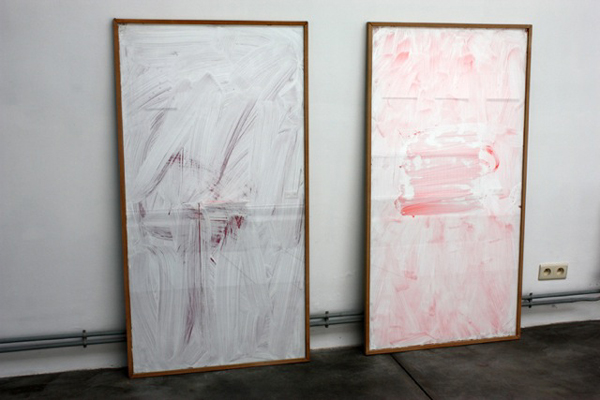IceMusic, the only festival in the world to showcase musical instruments made out of pure frozen water, offers its visitors a variety of perks. Physical comfort in sub-zero conditions, I remind myself, was not on the list.
The scenery, however, certainly was. Equidistant from Oslo and Bergen, Geilo is one of Norway’s five national park villages, and at this time of the year acres of deep snow, surrounded by mountains and lakes, lure winter sports enthusiasts. Down in the valley, signs of human habitation are pleasingly scarce.
It is here that the Norwegian percussionist and composer, Terje Isungset annually sets up camp. He founded the three-day IceMusic festival in 2006 as a platform for his compositions and burgeoning array of hand-made instruments. Six years later, it still serves a select crew ready to brave the Nordic winter for a glimpse of the ice horn, ice harp, or the ice didgeridoo in a makeshift concert hall built out of packed snow. In terms of sheer spectacle, the rewards are considerable. Isungset presides over the proceedings with a quiet confidence.
Known for making his own instruments out of natural materials, Isungset began experimenting with ice 13 years ago, when he was asked to compose music for a festival held beside a frozen Norwegian waterfall. The results went down well, and, together with American ice sculptor Bill Covitz, he began to develop his instruments. Since then he has taken them all over the world. His efforts are demonstrated in seven CDs and his complete ice collection now includes percussion, string, brass and woodwind instruments, their unique, ethereal timbre the result of extensive trial and error.
For Isungset, good sound quality is paramount, and he works hard to achieve it. Sculpting is a complicated process, involving a knife and electric chainsaw, and sourcing materials is hardly more straightforward: artificial ice is acoustically dead, so natural supplies are collected from glaciers, lakes and rivers. Instruments are stored in a walk-in freezer, policed by a thermostat which sends Isungset a text message when the temperature gets too high. Performances, on the other hand, are not confined to freezers, and melting is a perennial concern.
According to Isungset, acceptance is his only option: ‘Nature is stronger than all human beings and if it doesn’t cooperate, what can I do? So I can’t decide how the music is going to sound. Nature shows me what to do.’
It’s a philosophy that informs all areas of Isungset’s work. His ice compositions are guided, not by rules or precedents, but by the individual sound of his instruments. Influences are plucked from far-flung corners of the globe, and I noticed hints of Gamelan, folk music, Minimalism, even whale song. Much of the material is improvised by the performer, and few works cover the same ground. But if there’s one temptation to which Isungset repeatedly succumbs, it’s the thrill of combining the serious with the absurd.
Nowhere was this more apparent than at Saturday’s first concert. As the temperature plunged to -20C, spectators gathered outside to witness what, for some, was the highlight of their pilgrimage: the birth of the ice cello. Leo Svensson carried out the baptism, his assured cellist’s technique serving him well even through gloves and several layers of clothing. Thanks to Covitz’s carving efforts, the sculpture sounded almost like a real cello. Once the initial surprise had subsided, compositional strengths began to speak for themselves. The work gathered pace gradually, a slow introduction giving way to a vibrant, folk-like dance. Highly-charged rhythmic shards intertwined with elaborate ornamentation and the effect was at once hypnotic and exhilarating. Less could be said of the accompanying vocal part, notwithstanding Lena Willemark’s full-bodied performance. Between the barks, shrieks and growls it was hard to determine where the joke ended and the music started.
A more subdued brand of theatricality characterised the previous night’s ‘Meditation’. Lying in the snow on reindeer skins, we were encouraged to question the purpose of our existence while Isungset played ice percussion. In the confines of the snow cave, the hauntingly beautiful eerie sounds made it easy to buy into the atmosphere. Nevertheless, interest soon slipped through holes in the threadbare composition. Curiosity value might provide this kind of music with an audience. But what will remain once the novelty has melted away?
Perhaps it doesn’t even matter. In any case, impermanence is central to Isungset’s world view. As he puts it: ‘If you come back here tomorrow at exactly the same time and we talk about exactly the same things, first of all it would be very difficult, and second, why should we? Every day is a new day, so I always try to be in the moment.’
Although his words might make sense on a philosophical level, commercially, they don’t add up. In spite of sponsorship and government funding, the festival has made a loss every year. And any further losses, Isungset tells me, will put it out of action completely. Impractical it might be, and eccentric it certainly is, but IceMusic does make a brave statement about the lengths to which people will go for the most outrageous of artistic visions.


